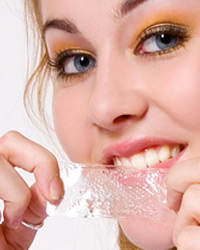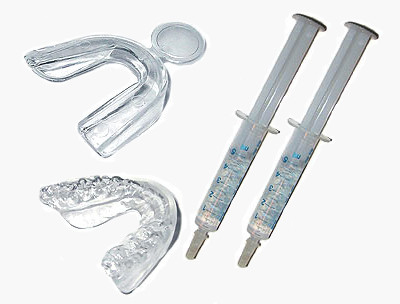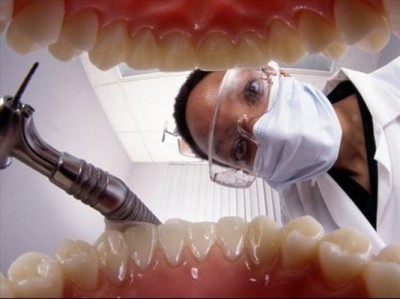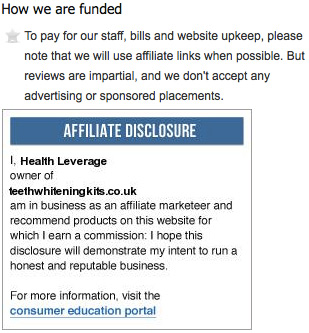Teeth Whitening Methods
As more and more people are looking to look younger, more attractive and feel more confident, the most well liked beauty procedure in the world is teeth whitening. Despite its popularity, this treatment cannot be used by everyone, and it does have certain limitations and a few disadvantages.
Pregnant and nursing women, as well as those who have gum disease, are advised not to use any whitening products. This procedure is also not suggested by dentists for those with cavities and/or cracked teeth, or who have crowns, bondings, veneers or fillings, as they typically do not respond to whitening agents and can damage the integrity of veneers, crowns and fillings.
If you do not fall into any of these categories, chances are you can successfully whiten your teeth. Most people have a small tinge to their teeth that can be pale yellow, pale brown or pale gray. Results of whitening are dependent on your specific undertone. The American Dental Association says that those with a yellow undertone have the best chance of success with whitening, and those with a brown undertone have a moderate chance of success. Unfortunately, teeth with a gray undertone don’t respond well to the bleaches used to whiten. However, there are some exceptions, so those with gray undertones should make sure to speak with a dentist for possible options.
Bleaching is ideally used to eliminate stains caused by the drinking of coffee, cola, wine, tea or other dark liquids as well as stains caused by smoking. It can also be used to reverse stains caused by genetics or the use of antibiotics, though results are slightly less noticeable. Dentists say they can considerably lighten stains caused by medicines or genes, but it is not to the degree that most patients expect or prefer.
So now that you know whether you can successfully whiten your teeth, the next question is – what works and what does not? The following is an explanation of each method and their effectiveness.
Teeth Whitening Toothpastes

Whitening toothpastes are extremely popular and available over the counter in almost every store. However, the amount of whitening a product can achieve is based on the amount of time the product is in contact with your teeth, as well as the concentration of bleach in the product. Because whitening toothpastes are only in contact with teeth for a few minutes (or a few seconds, if you aren’t brushing properly), and the concentration of the bleach is low, they do not provide a very high degree of visible change, even when used perfectly.
How Do They Work?
These toothpastes use small quantities of hydrogen peroxide or other bleaching agents to gently lift surface stains on the teeth caused by drinking dark liquids.
Results
Dentists are in disagreement over the effectiveness of these whitening toothpastes. While some believe they are useless marketing ploys and no more effective than regular toothpastes, many believe that they can improve the shade of one’s teeth, though not significantly. Therefore, you should not expect whitening toothpastes to produce dramatic results.
Over the Counter Whitening Strips and Pens

These products are available at almost any supermarket or chemist, and offer significantly more noticeable results than simply using teeth-whitening toothpaste. These products consist of whitening strips, paint on bleach and / or non-customizable disposable mouth trays.
How Do They Work?
These products are inexpensive compared to dentist administered solutions, though significantly more expensive than whitening toothpastes. Most products use a gel with a small amount of bleach and provide detailed instructions as to their daily use. Users can expect to wear the strips, trays or painted on bleach for up to sixty minutes a day (usually in two applications), and use the product for one to two weeks.
Results
Those who suffer from surface stains and not any genetic disorders can expect to notice a striking difference in the color of their teeth, especially in the front. Despite at-home whitening kits including exact instructions, many find following these directions difficult, especially in regards to getting product on the teeth in the back of the mouth, limiting their effectiveness of whitening all of the teeth. Another drawback to these kits is the fact that the mouth trays are non-customizable and occasionally too short to cover all of the teeth, causing results to often only be noticeable in the front where contact is almost guaranteed.
Professional Over the Counter Teeth Whitening Kits

Products such as Smile4You Dental white kits are an at-home teeth-whitening kit that provides professional grade ingredients as well as customizable mouth trays with the ability to mold and fit into each arch of your mouth.
How Do They Work?
These kits are purchased over the counter from a dentist after he or she makes a mold of your mouth, thereby creating custom fitted trays to fill with the peroxide bleaching gel. The concentration of whitening agents in the gel will determine how long you have to wear the trays as well as how quickly results are achieved. Some people use the trays for thirty to ninety minutes over two weeks, while others wear the trays over night for one to two weeks.
Results
From the highest-level kit, you can expect lasting results of up to a ten-shade difference. If stains begin to accumulate again after using the product, a follow up routine will help to restore the teeth. Kits such as Dental White are an excellent value because they combine the performance of a dentist treatment without the huge price tag.
Professional Dentist In-Office Whitening

This treatment is considered the quickest and simplest way to whiten your teeth. However, it is also costs much more than the alternatives.
What is In-Office Bleaching?
In today’s market, there are two forms of in-office bleaching; light activated bleaching and non-light activated bleaching. Light activated bleaching, such as Zoom and Sapphire, use a laser or LED-powered light to produce up to a nine-shade difference in your smile in only sixty minutes. Non-light activated bleaching, such as Pola White and Opalescence, use high-end bleaching gels over one or several office visits. One form, known as Deep Bleaching, claims to be the best treatment, as it can significantly improve difficult to treat stains, and occasionally whitening teeth underneath veneers. This treatment consists of two office visits with the use of an at-home whitening kit in between.
Currently dentists are focusing more on non-light activated treatments as light activated treatments still lack clinical data, are not very cost effective and do pose a safety concern for patients.
Advantages: The main bonus to in-office treatments is the fact that dentists can administer high doses of bleach and can assure proper contact time with the teeth, improving chances for the best possible whitening results. With the deep bleaching method, the mouth tray used essentially seals the bleach to the teeth, providing better contact period than any other method.
Results
The results of most in-office whitening treatments typically last three to four years, with deep bleaching treatments lasting upwards of five years. In order to protect your results, always use the dentist recommended after-care products.
In-office treatments are relatively painless, though they do have the possibility of increasing sensitivity in the gums. The cost of in-office treatments is the biggest drawback, ranging anywhere from £100 to over £1000 ($150 to over $1500) for treatment and slightly pricy aftercare products such as specialty mouthwashes and toothpastes.
The Verdict?
The bottom line is, if you would like excellent results in a small amount of time, then in-office whitening treatments are the way to go. Just make sure to select the best dentist so he or she can help you determine the best whitening method for you. If price is a factor, then the best option for teeth whitening is using a Pro Teeth Whitening Kit using dentist grade ingredients, and customisable mouth trays. You won’t get the feedback your dentist will provide, but you can get the same results at a fraction of the price.



